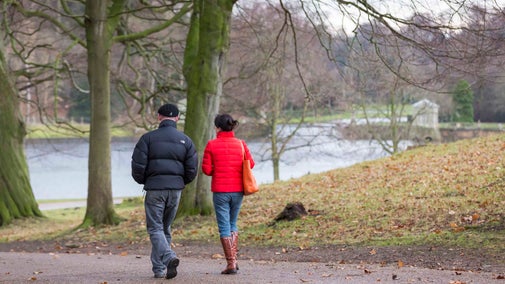Roseberry Topping and Captain Cook's Monument walk
Yorkshire
Beginning at Great Ayton village green, you'll pass through woods and farmland then climb the hill to Captain Cook's Monument. From there, you'll follow the Cleveland Way to the summit of Roseberry Topping to take in the 360-degree views, before heading down through oak woodland and making your way back to Great Ayton.
Near to
Roseberry ToppingStart point
Great Ayton village green, grid ref: NZ562106Trail information
More near here
Roseberry Topping from Great Ayton station walk
A circular walk that starts and finishes at the railway station in Great Ayton and takes in the panoramic views at the summit of Roseberry Topping.

Get in touch
Our partners

We’ve partnered with Cotswold Outdoor to help everyone make the most of their time outdoors in the places we care for.
You might also be interested in
Walking
Explore some of the finest landscapes in our care on coastal paths, accessible trails, woodland walks and everything in between. Find the best places to walk near you.

Walking in Yorkshire
Discover some of the best walks in Yorkshire, from rugged Pennine beauty spots, views over the coast, to parkland and meadows perfect for a family stroll. Most are dog friendly and many can be enjoyed as part of your day out to the nearest National Trust property.

Things to see and do at Roseberry Topping
Discover what you can do around Roseberry Topping, from climbing the hill itself to seeing geological formations at Cliff Rigg Quarry and spotting wildlife such as roe deer.

Hill and mountain walks
Explore a range of memorable and historic hill and mountain trails across the UK. There's something for everyone, from seasoned adventurers to relaxed ramblers and nature lovers to family groups.

Top tips for hill and mountain walking
Learn about the essential clothing and equipment to take with you, keeping your energy levels up, staying safe and leaving the environment as you found it.

Staying safe at National Trust places
The special places in National Trust care sometimes come with a few risks for visitors, be it coastline or countryside. Find out how to keep safe throughout your visits.

Follow the Countryside Code
Help to look after National Trust places by observing a few simple guidelines during your visit and following the Countryside Code.

Cotswold Outdoor: our exclusive walking partner
Learn about the National Trust’s ongoing partnership with Cotswold Outdoor. Find out how they help us care for precious places and the exclusive discount available for National Trust supporters.


